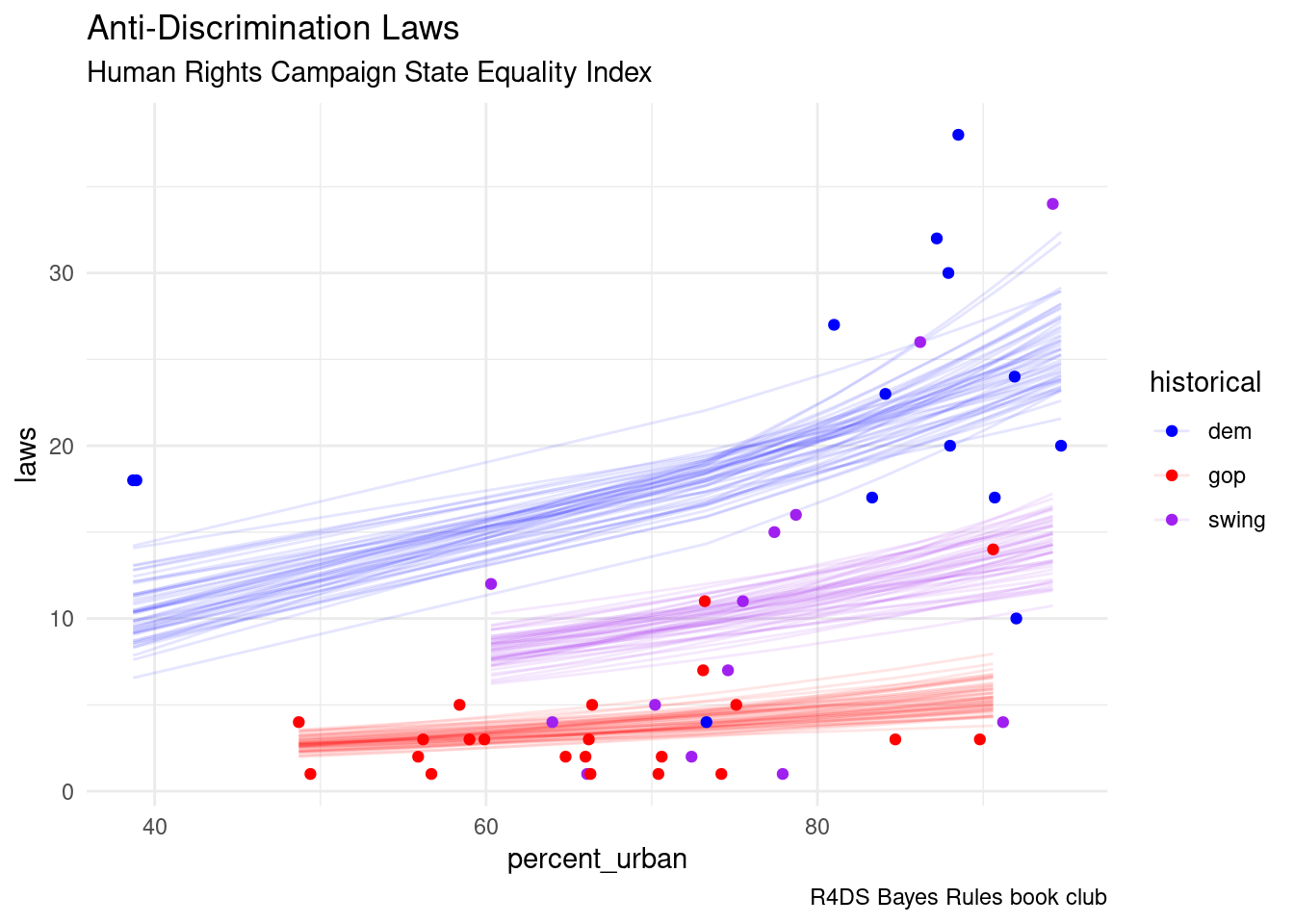12.7 Interpretation
equality %>%
add_fitted_draws(equality_model, n = 50) %>%
ggplot(aes(x = percent_urban, y = laws, color = historical)) +
geom_line(aes(y = .value, group = paste(historical, .draw)),
alpha = .1) +
geom_point(data = equality) +
labs(title = "Anti-Discrimination Laws",
subtitle = "Human Rights Campaign State Equality Index",
caption = "R4DS Bayes Rules book club") +
scale_color_manual(values = c("blue", "red", "purple")) +
theme_minimal()
tidy(equality_model, conf.int = TRUE, conf.level = 0.80)## # A tibble: 4 × 5
## term estimate std.error conf.low conf.high
## <chr> <dbl> <dbl> <dbl> <dbl>
## 1 (Intercept) 1.71 0.303 1.31 2.09
## 2 percent_urban 0.0164 0.00353 0.0119 0.0210
## 3 historicalgop -1.52 0.134 -1.69 -1.34
## 4 historicalswing -0.610 0.103 -0.745 -0.477\[\log(\lambda_{i}) = 1.71 + 0.0164X_{i1} - 1.52X_{i2} - 0.61X_{i3}\] or \[\lambda_{i} = e^{1.71 + 0.0161X_{i1} - 1.52X_{i2} - 0.61X_{i3}}\]
- \(\beta_{0} = 1.71\): the “typical state” has \(e^{1.71} \approx 5.53\) anti-discrimination laws
- \(\beta_{1} = 0.0164\): when controlling for
historicalvoting trends, if the urban population in one state is 1 percentage point greater than another state, we’d expect it to have 1.0165 times the number of, or 1.65% more, anti-discrimination laws \[e^{0.0164} \approx 1.0165\] - \(\beta_{2} = -1.52\): when controlling for
historicalgopvoting trends, if the urban population in one state is 1 percentage point greater than another state, we’d expect it to have about 88 percent fewer anti-discrimination laws \[e^{-1.52} \approx 0.2187\] - \(\beta_{3} = 0.61\): when controlling for
historicalswingvoting trends, if the urban population in one state is 1 percentage point greater than another state, we’d expect it to have about 46 percent fewer anti-discrimination laws \[e^{-1.52} \approx 0.5434\]